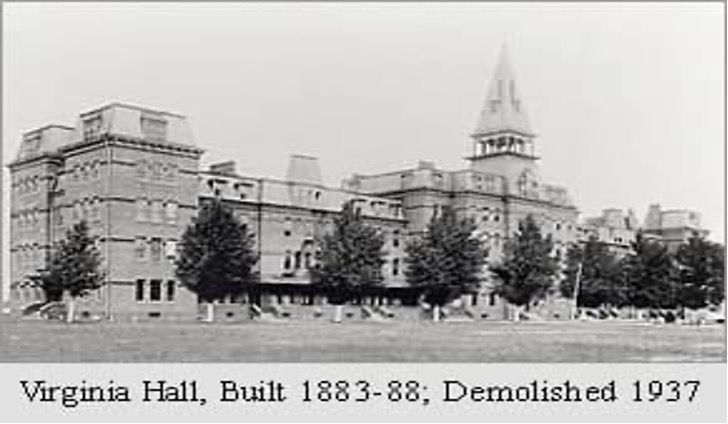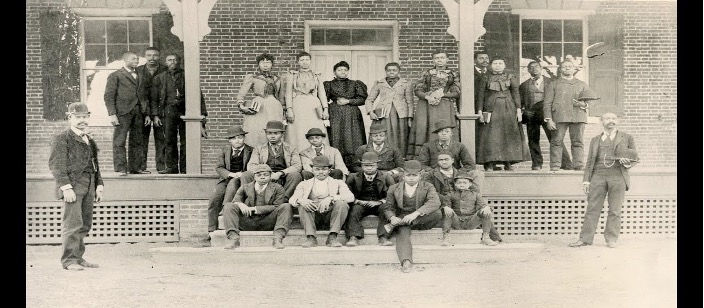The Urgent Quest for Education: African American Colleges in the Post-Civil War South
- Snow Hill African American Heritage Society
- Oct 4
- 6 min read

Paving the Way in Education: Segment One
Paving the Way focuses on the educational history of African Americans in the United States, particularly in the Southern states. After the Civil War, freed African Americans emerged with an urgency and a strong desire to be educated. There was a need to build colleges to provide African Americans with the skills and trades to live a productive life.
This segment focuses on Historically Black Colleges and Universities that were established to educate African Americans.
Historically Black Colleges and Universities (HBCUs)
HBCUs manifested from philanthropists and African American churches, with assistance from the American Missionary, Freedmen Bureau, and the Second Morrill Act of 1890. The first Morrill Act was introduced by Senator Justin Morrill of Vermont and passed by the federal government in 1859 to advance the agricultural sciences and was extended to the Confederate States in 1862. The Act provided federal funds from the sale of public land to an endowment fund for the land-grant colleges of agriculture and mechanical arts.
The second Morrill Land Grant of 1890 Act (the Agricultural College Act) was established to address the discriminatory admissions policy of the first Morrill Act of 1862. The Morrill Act of 1890 stipulated that African Americans were to be included in the higher Education system without discrimination. The Morrill Act of 1890 required states to open the land grant colleges to all races or establish separate colleges for African Americans. Therefore, the Act resulted in the legalization of separate schools, paving the way for the development of 19 Historically Black Land–Grant Universities (HBLGUs). In addition, it made provision for states with separate colleges to designate a college to train African Americans in agriculture, mechanical arts, and architecture. Also, the Morrill Act of 1890 Act provided for yearly appropriations to each state to support its land grant college. The map shows the location of the 1890 Land Grant Colleges and Universities.

Today, there are over 100 Historically Black Colleges and Universities in the United States with an enrollment of nearly 300,000 students. Over 125 years, these institutions have demonstrated academic excellence and leadership, which have contributed tremendously to the intellectual capital across the Nation. Several African American leaders, writers, actors, athletes, entertainers, and others graduated from an HBCU, such as Dr. Martin Luther King Jr., Thurgood Marshall, Rev Jesse Jackson, Vice President Kamala Harris, Samuel L. Jackson, Jerry Rice, Taraji P. Henson, and Spike Lee. HBCUs have been resilient over the years with a commitment to excellence, and continue to prepare students to be successful in their academic field of study.
Listings of HBCUs in Delaware, Maryland, and Virginia
· Bowie State University, Bowie. Maryland
· Coppin State University, Baltimore, Maryland
· Delaware State University, Dover, Delaware (one of the 1890 HBLGUs)
· Hampton University, Hampton, University
· Howard University, Washington, District of Columbia
· Morgan State University, Baltimore, Maryland
· Norfolk State University, Norfolk, Virginia
· University of Maryland Eastern Shore, Princess Anne, Maryland (one of the 1890 HBLGUs)
· University District of Columbia, Washington, District of Columbia
· Virginia State University, Petersburg, Virginia (one of the 1890 HBLGUs)
· Virginia Union University, Richmond, Virginia
· Virginia University at Lynchburg , Lynchburg, Virginia
Early Years
Highlights of three HBLGUs
Delaware State University
Delaware State University was established on May 15, 1891, as a State College for Colored Students by the Delaware State Assembly after the passage of the second Morrill Act of 1890. The university was initially located on 95 acres of land in Dover, Delaware. The University only offered students to study five majors leading to a baccalaureate degree. After five years, the school offered a program leading to a teacher’s certificate. The first year of teacher candidates graduated in May 1898. At the beginning of the 20th century, agriculture, mechanical arts, and domestic arts courses were offered. In 1947, the State College for Colored Students was changed to Delaware State College, and in 1993, it was renamed to Delaware State University by the Governor
As of 2019, Delaware State University has an enrollment of 5.054 students. The university has grown from a 95-acre campus to a 356-acre campus. Delaware State University encompasses four campuses, including Wesley College, and offers undergraduate and advanced degrees to a diverse student population.


University of Maryland Eastern Shore
The University of Maryland Eastern Shore was established on September 13, 1886, with one building and nine students. The university was initially known as the Delaware Conference Academy under the auspices of the Methodist Episcopal Church to educate freed African Americans. The institution was founded as a branch of Baltimore Centenary Biblical School, which became a Morrill Act of 1890 Land Grant institution and began as a branch of Morgan College (Morgan State University). With the adoption of the second Morrill Act, the State of Maryland formed a partnership with Morgan College to receive funding to support the Industrial Branch in rural Somerset County. The school’s name was changed to Princess Anne Academy of the Agricultural College of Maryland.
In 1935, the University of Maryland System acquired the Princess Anne Academy from Morgan College for $100,000. The school’s name was changed to Maryland State College in 1948. Later, in 1970, the name was changed to the University of Maryland Eastern Shore.
The University of Maryland Eastern Shore has grown from a 16-acre property to a 1,100-acre campus. It offers undergraduate degrees with 32 disciplines, 23 distinctive graduate and professional programs, and 3 certificate programs. The university provides students many opportunities to develop into a well–rounded individual capable of assuming leadership in society. Based on the 2019 – 2020 data, there are nearly 2,886 students enrolled in the University.

Virginia State University
Virginia State University was the first state-sponsored school for African Americans in the United States authorized to grant a college degree. Virginia State University was founded on March 6, 1882, after the legislation passed a bill to charter the Virginia Normal and Collegiate Institution, sponsored by delegate Alfred Harris, a black attorney. A hostile lawsuit delayed the opening until October 1, 1883. The school opened as a teacher college and included a modest liberal arts curriculum. During the first year, 1883 – 84, the University was situated on a 32-acre property and had 126 students and seven faculty. The first President of Virginia State University, John Mercer Langston. He would become the only African American elected to the United States Congress in 1888, although he only served in the House from 1890-1891.
In 1902, due to a contested environment, the legislature revised the charter to curtail the collegiate program and changed the name to Virginia Normal and Industrial Institute. In 1920, the land-grant school was moved from Hampton Institute, where it had been since 1872, to Virginia Normal and Industrial Institution. In 1930, the name was changed to Virginia State College for Negroes. In 1944, a two-year branch in Norfolk was added to the college. In 1956, the Norfolk division became a 4 year college and gained its independence as Norfolk State College in 1969. In 1979, the school acquired its name, Virginia State University.
The University has grown to a 235-acre campus and a 416-acre farm. As of 2019 – 2020, the University has 4,365 students enrolled in undergraduate and graduate programs.


Written by: Maria Blake, Ed.D.
Originally posted in September 2021. Reposted in October 2025
References
1890 It's Our Country too! Morrill Legislation. Retrieved from:
About the University of Maryland Eastern Shore. Retrieved from:
Fisher, B. (2009). Virginia State University. Ettrick Virginia. Chesterfield County. Retrieved
History of VSU. Retrieved from: https://www.vsu.edu/about/history/history-vsu.php
King, J. 2021. The Soul of a Nation: Past, Present, and Continuing Importance of the Historically Black College and University, Retrieved from:
Luebering, J.(updated 2025). John Mercer Langston American Politician. Retrieved from:
Our History (2021). Delaware State University. Retrieved from:
Student Population at Virginia State University (VSU). Retrieved from:
Toldson, I. (2015). The White House Initiative on HBCUs Celebrates the 125th Anniversary of
Second Morrill Act. White House Initiative on Historically Black Colleges and Universities, U.S. Department of Education. Retrieved from: https://sites.ed.gov/whhbcu/tag/morrill-act/








Comments